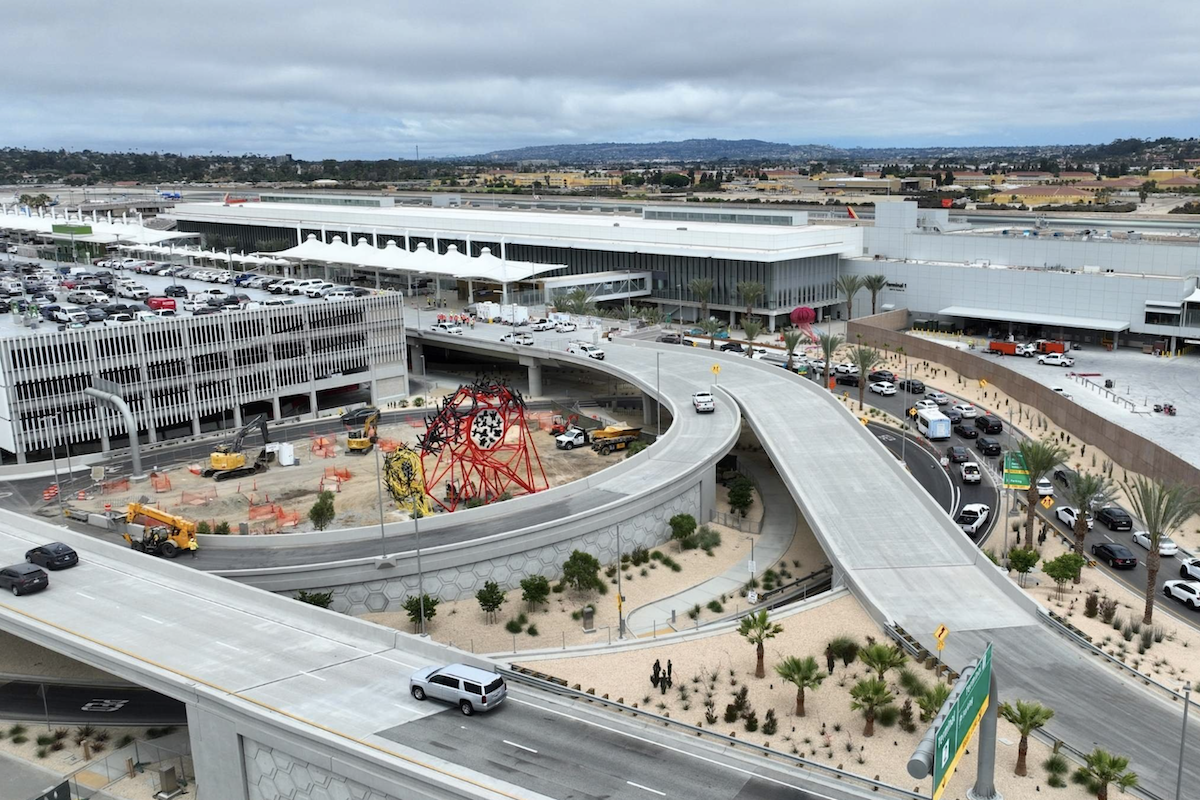“The project is intended to provide faster, more reliable public transportation service in the study corridor than can be achieved with buses operating in congested mixed-flow traffic, to provide reliable mobility in areas of the study corridor where people of limited income and an aging population live, and to serve rapidly developing areas of the study corridor,” says Matthew Scanlon, Director of Design and Construction at the Honolulu Authority for Rapid Transportation (HART).
The entire rail system runs on an elevated guideway to avoid ground-level interactions with vehicles or pedestrians. The guideway ranges from at-grade at the Leeward Community College station to 81 feet at its highest point.
“There are no grade crossings,” Scanlon says. “It reduces our footprint. It is more expensive, but from an operational standpoint, there are benefits.”
Additionally, grade separation will help support HART’s goal of having a consistent and reliable schedule, because train vehicles are not subject to street-level congestion, which can cause delays. Elevating Skyline reduces the amount of land needed.

| Your local Gomaco dealer |
|---|
| Terry Equipment |
The alignment runs along roadways and farmland. The only section at grade is entering the train maintenance and storage facility.
Skyline operates without drivers. Everything is automated. “This is the first commuter rail system in the U.S. that is fully autonomous,” Scanlon says. “Everything is software and mapped.”
Currently, the operators are providing 99.5 percent reliability. “We think people will use it, because it is predictable and reliable,” Scanlon adds.
Figg Bridge Group of Tallahassee, Florida, HNTB of Kansas City, Missouri, AECOM of Dallas, and Anil Verma Associates of Los Angeles served as engineers for various aspects of Segment 1. Kiewit, Nan, and Hawaiian Dredging Construction Co., all with offices in Honolulu built Segment 1.
The Hitachi Rail Honolulu JV, a joint venture between Hitachi Rail STS SpA and Hitachi Rail SpA, of Pearl City, Hawaii, is responsible for System Operations and Maintenance for the entire project. The JV also provided the trains. The Hitachi JV contract is a design-build-operate-maintain contract.
The project broke ground in 2011 but has run into numerous challenges and delays, including a 13-month archeological inventory survey related to possible burial grounds; the contractors had to ship materials and equipment from the mainland; the COVID-19 pandemic affected supply chains; limited laydown area and industrial yards; and only a limited workforce was available to build the Skyline with other mega projects also under way.
With “the magnitude of the job, a lot of equipment had to be shipped in,” Scanlon says. “On an island, there are only so many resources.”
Ten-foot diameter drilled shafts support the guideway and stations. Some of the guideway spans streams, and some of the shafts are in water.
“We have the world’s deepest single shaft at 357 feet deep,” Scanlon reports. “And that was in water.”
The entire Skyline is built with precast concrete segmental post-tensioned spans. The rails are installed on top of the bridge spans.
The stations also are elevated, adding to the costs and complexities of construction. Most are concrete structures. “Our stations are very complicated,” Scanlon says.
The Skyline rail system runs through some historic areas, which required exhausting all other engineering options and approvals from the state.
The guideway passes above major roadways and has affected local businesses. Lane closures were necessary when building overhead. Once work shifts to above, the impacts are less, but it still requires traffic management. Consequently, much of the work has taken place at night.
“There is no getting around the fact we have to detour traffic during the day,” Scanlon says.
Segment 2 will take passengers to the airport. The guideway and track work are complete. HART estimates construction of the four stations in this segment to complete by the end of the year.
“Core systems equipment installation for electrical, communications, train control, and signaling has begun in this segment,” Scanlon says.
Segment 2 should open in mid-2025. Crews working on Segment 3 are relocating utilities. The utility work includes moving storm drainage facilities, sewer lines, mater mains, gas lines, electrical conduit and communication infrastructure. Frank V. Coluccio Construction Co. of Honolulu received the contract in the downtown area and began work in June 2022.
Nan received the contract for the Dillingham utility relocations. Work began in December 2022 and is expected to complete in early 2026.
Two years ago, HART decided to shift a portion of the alignment from the center of the road to the mountain side of Dillingham Boulevard, saving the project $150 million by not needing to move as many utilities.
HART flies drones to document progress on the project.
Still remaining to be funded are two stations and a 1.25-mile guideway extension to the island’s tourist and hotel beach area and the Ala Moana Transit Center. This portion of the original project was eliminated from the plan submitted to the Federal Transit Administration.
“We did not have enough money to build the last section,” Scanlon says. “The goal is still to build the 20 miles and 21 stations.”
HART has become more transparent about challenges and keeps citizens apprised of progress on Skyline.
“I am proud of being part of the team that opened up Segment 1, because it took so long and a lot of people never thought it would happen,” Scanlon concludes. “The service we are providing for the community is very safe, very reliable, and very predictable.”
Photos courtesy of Honolulu Authority for Rapid Transportation








































































